This is the final post in our series which updates the latest Digital Finance Analytics Household Surveys. This is data which will feed into the next edition of our flagship publication “The Property Imperative“. The March edition of which is still available on request.
Having looked at first time buyers and investors, today we look at households already owning a property. One important group are down-traders. This segment, of more than 1.2 million households have an existing owner occupied property. Many will have paid down their mortgage, and will have enjoyed significant capital gains in recent years. Now they want to sell, and buy something smaller, and sometimes also an investment property.
There are two key drivers. First, one third are driver by a desire for more convenient living (perhaps a smaller or no garden, or a move into an apartment, or somewhere with better public transport and services). Next we find one third transacting in connection with planning for retirement. Around 20 per cent are looking to switch their investments into property, whilst others are dealing with the death of a spouse or other factors. In total this group is a very significant influence on the market, with an appetite for quality apartments.
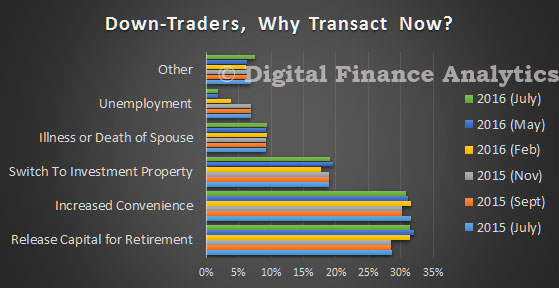 Next we look at up-traders. This is a significant, smaller, but important group, seeking to purchase a larger, and probably more expensive property. One third are driven by a desire for more space, but more – close to 45 per cent – are influenced by the prospect of capital appreciation, so a purchase is more an investment-related decision. Others are influenced by a life-style change, or a change in employment.
Next we look at up-traders. This is a significant, smaller, but important group, seeking to purchase a larger, and probably more expensive property. One third are driven by a desire for more space, but more – close to 45 per cent – are influenced by the prospect of capital appreciation, so a purchase is more an investment-related decision. Others are influenced by a life-style change, or a change in employment.
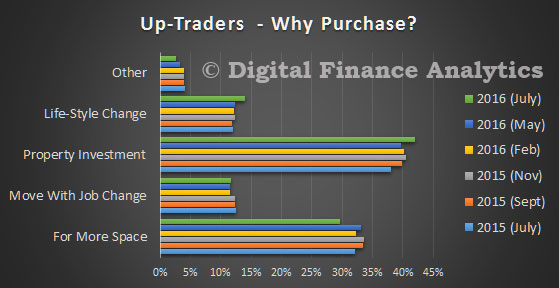 Then finally, we look at those seeking to refinance an existing loan. This is a large and significant group, which are being teased by ultra low rates and special offers. The most important reason to refinance is to reduce monthly payments, no surprise given flat income growth, and large loans. However, around 15 per cent are motivated by the opportunity to realise capital gains created by recent price growth. This flow of funds may go towards a holiday, building works, or other purchases, or to pay off other debts.
Then finally, we look at those seeking to refinance an existing loan. This is a large and significant group, which are being teased by ultra low rates and special offers. The most important reason to refinance is to reduce monthly payments, no surprise given flat income growth, and large loans. However, around 15 per cent are motivated by the opportunity to realise capital gains created by recent price growth. This flow of funds may go towards a holiday, building works, or other purchases, or to pay off other debts.
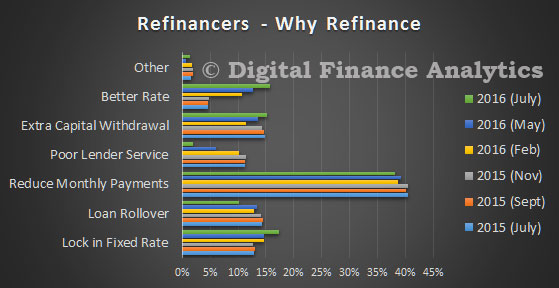 When we analyse the drive to refinance by loan size, we see that those with larger loans are more driven by cash release, whilst those with smaller loans are more concerned about reducing payments. We also note that brokers are more directly involved in the refinance of larger loans.
When we analyse the drive to refinance by loan size, we see that those with larger loans are more driven by cash release, whilst those with smaller loans are more concerned about reducing payments. We also note that brokers are more directly involved in the refinance of larger loans.
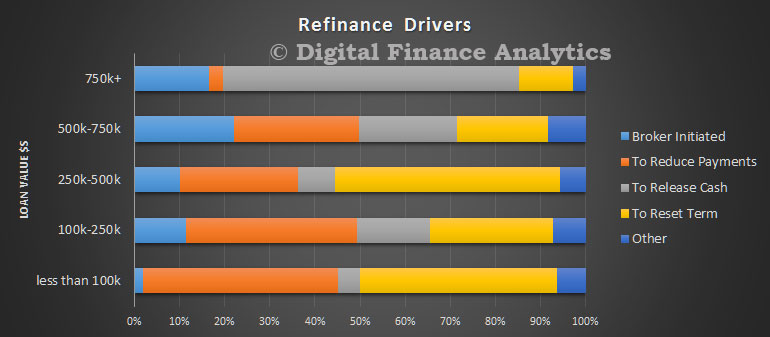 Typically, the refinanced loan will sit in the $250-500k range
Typically, the refinanced loan will sit in the $250-500k range
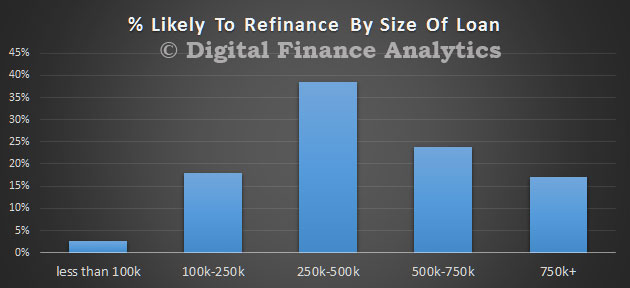 Finally, we found that larger loans, even now, were more likely to be refinanced to interest only, rather than a principal and interest loan.
Finally, we found that larger loans, even now, were more likely to be refinanced to interest only, rather than a principal and interest loan.
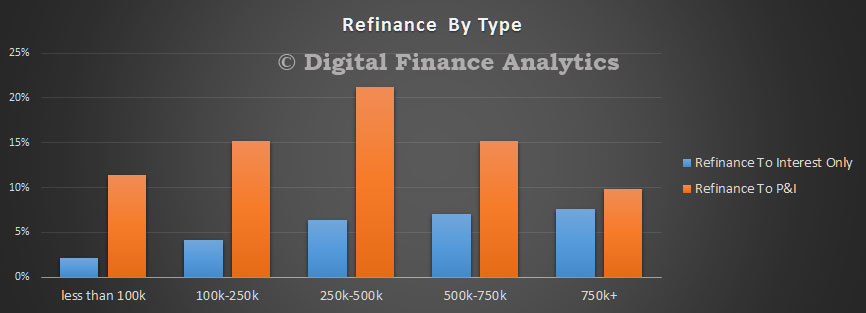 This concludes the latest updates. We will continue to run the surveys, and we expect to publish the next edition of The Property Imperative, with the latest results, in September or October this year.
This concludes the latest updates. We will continue to run the surveys, and we expect to publish the next edition of The Property Imperative, with the latest results, in September or October this year.
